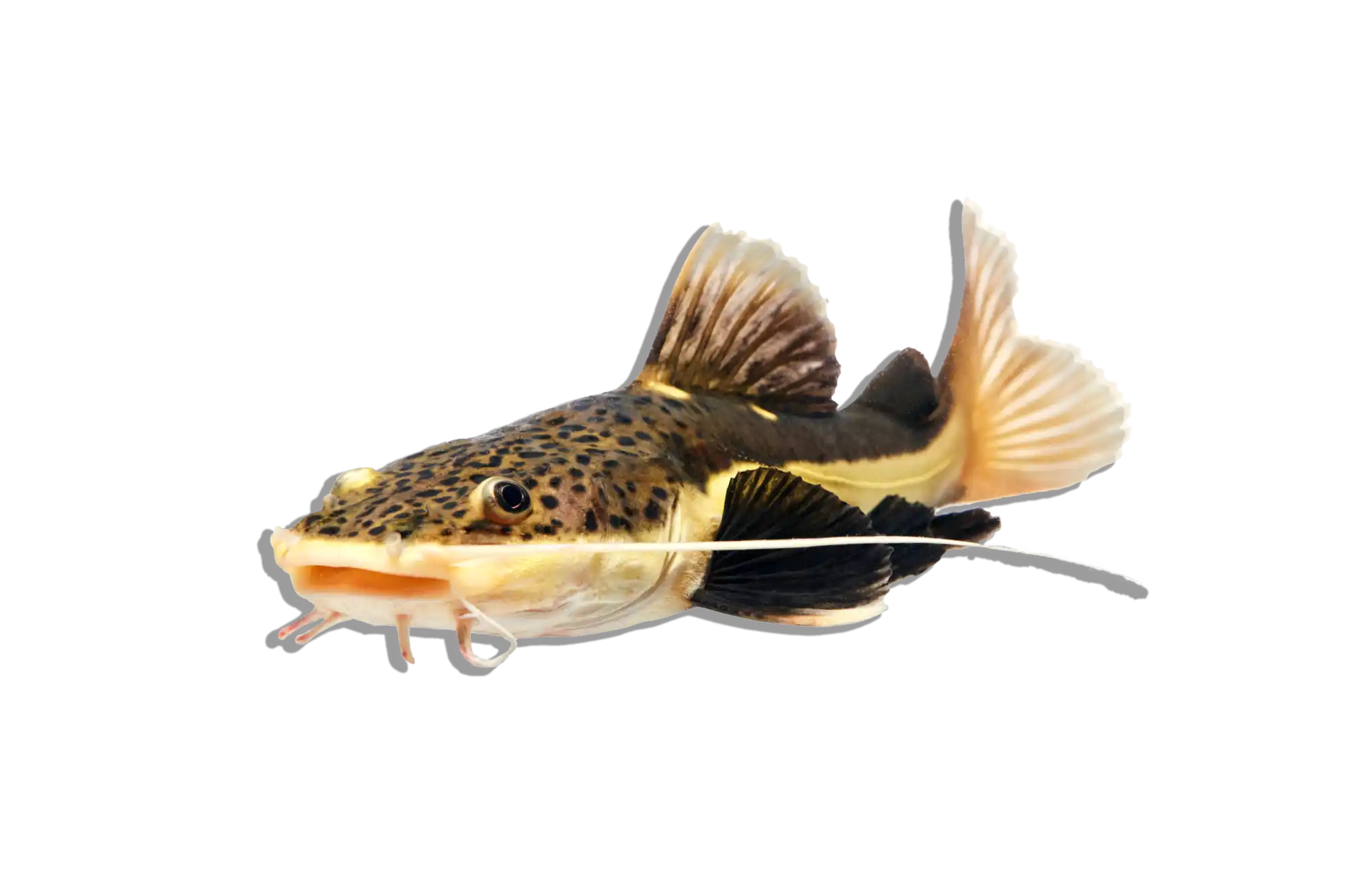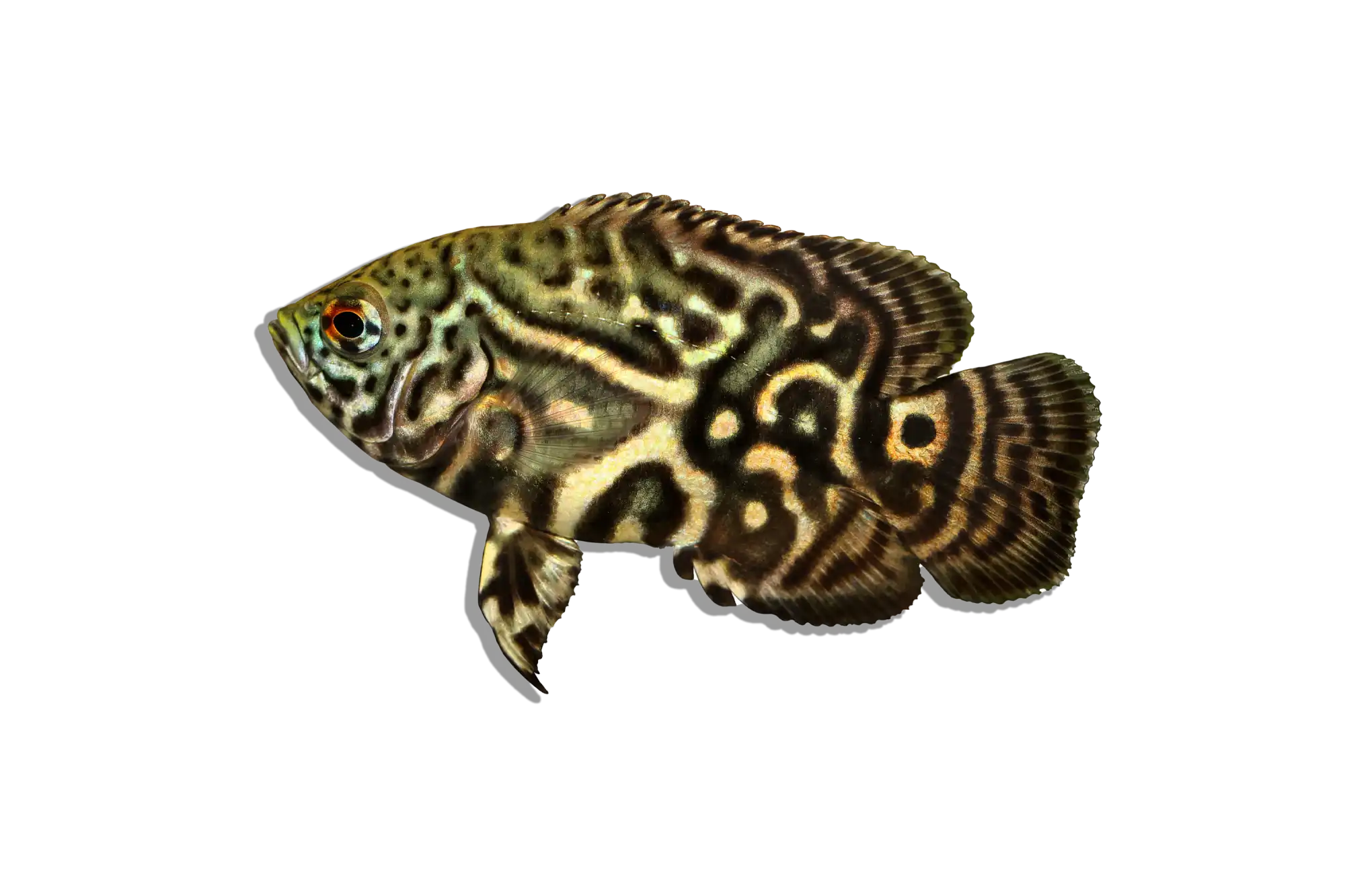Description
Common Name: Lima Shovelnose Catfish
Scientific Name: Sorubim lima
Other Names: Duckbill Catfish, Shovelnose Catfish
The Lima Shovelnose Catfish is a captivating freshwater fish known for its elongated body and distinctive shovel-like snout. Its body is typically silver to grey with darker spots and stripes, giving it a mottled appearance that helps it blend into its surroundings. The elongated body and extended whiskers (barbels) make this species particularly striking.
Habitat and Distribution:
The Lima Shovelnose Catfish is native to the rivers and tributaries of South America, particularly the Amazon and Orinoco River basins. They are found in countries such as Brazil, Peru, Colombia, and Venezuela. These catfish inhabit slow-moving rivers, floodplains, and areas with dense vegetation and submerged wood, providing ample hiding spots and feeding grounds.
Size and Lifespan:
In the wild and captivity, Lima Shovelnose Catfish can grow up to 18 inches (45 cm) in length, though they can occasionally reach lengths of up to 24 inches (60 cm). With proper care, their lifespan can range from 10 to 15 years, depending on the quality of their diet and water conditions.
Diet and Behavior:
Lima Shovelnose Catfish are carnivorous, feeding primarily on small fish and invertebrates in their natural habitat. In an aquarium, their diet should include high-quality carnivorous pellets, live or frozen foods such as brine shrimp, bloodworms, and small pieces of fish. They are nocturnal and most active during the night, using their long barbels to sense their environment and locate prey. These catfish are generally peaceful but can be predatory towards smaller tank mates, so they are best kept with similarly sized or larger, non-aggressive fish.
Breeding and Reproduction:
Breeding Lima Shovelnose Catfish in captivity is challenging and rarely achieved. Little is documented about their breeding habits in the wild. They are believed to spawn in specific conditions that are difficult to replicate in an aquarium setting. Successful breeding typically requires very large, well-maintained tanks with optimal water conditions and plenty of hiding spots.
Aquarium Care and Tank Requirements:
Due to their large size and active nature, Lima Shovelnose Catfish require a very large aquarium, with a minimum of 150-200 gallons recommended for adult specimens. The tank should have a soft, sandy or fine gravel substrate to prevent injury to their delicate barbels. Include plenty of hiding spots created with rocks, driftwood, and plants to mimic their natural habitat and reduce stress. Efficient filtration and regular water changes are essential to maintain water quality, as these fish produce a significant amount of waste. The water temperature should be kept between 75-82°F (24-28°C), with a pH of 6.5-7.5 and soft to moderately hard water.
Ideal Tank Mates:
Lima Shovelnose Catfish can be kept with other large, peaceful fish that share similar water parameter requirements. Suitable tank mates include large cichlids, other large catfish, and similarly sized robust fish. Avoid housing them with small or delicate species that may become targets of predation.
Difficulty Level:
Intermediate to Advanced. Keeping Lima Shovelnose Catfish requires a deep understanding of their needs, including their large size, nocturnal behavior, and specific water quality requirements. They are best suited for experienced aquarists with the space and resources to provide proper care.
Water Parameters:
- Temperature: 75-82°F (24-28°C)
- pH: 6.5-7.5
- General Hardness (GH): 5-15 dGH
- Carbonate Hardness (KH): 4-10 dKH
- Ammonia: 0 ppm (ideal)
- Nitrite: 0 ppm (ideal)
- Nitrate: <20 ppm (ideal)
Additional Information:
- The Lima Shovelnose Catfish’s unique appearance and large size make it a striking addition to any large aquarium.
- They are known for their nocturnal behavior, often hiding during the day and becoming more active at night.
- Fun fact: Lima Shovelnose Catfish use their long barbels to sense their environment and locate prey, making them efficient nocturnal hunters.




















